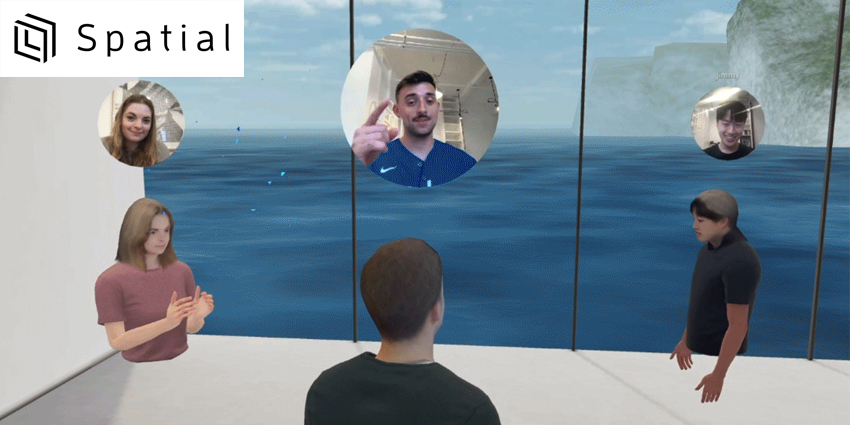Spatial is the leading metaverse platform for mixed reality (MR) remote working and collaboration, and is available across numerous virtual reality (VR) headsets, browser platforms and mobile devices.
Following a successful v4.0 earlier this year, Spatial updated the platform to enhance navigation and communication features as the firm completes its 2021 roadmap,
New Features
The crucial version 5.0 enhancements improve user navigation across the ‘Spatialverse,’ which covers both menu and 3D-space navigation, allowing Spatial users access to new menu functions to instantly teleport to various locations, or ‘rooms’, within the Spatial metaverse.
Similarly, users can now navigate rooms with ease with the platform’s new surface-based teleportation movement system, where users can navigate up stairs and enjoy multi-storey environments.
More updates to menu navigation include a Subdock panel which displays the number of users in a room and makes invitations far easier.
The new Space Picker menu also provides simpler access to personal rooms, community rooms, and virtual events.
Additional updates have refined animation and avatars with realistic fashion and facial details, as well as fluid movements to increase immersion while simultaneously improving engine performance.
Lastly, browser-based users can connect webcams to the platform and stream camera feeds above Spatial avatars for a new ‘human’ connection.
Updated Pricing Tiers
Spatial 5.0 gives Oculus VR users a selection of new tier-based subscriptions for the Quest 2 port of the platform.
The platform also offers four tiers, including a free base-level tier for individual use, a Pro and Team tier priced at $25 USD per month, and an enterprise-grade tier, refining Spatial’s business-to-business remote collaboration solution by allowing firms of any size to pick the subscription that works for them.
This new comes as Spatial added compatibility to over six new headsets, including Valve Index, HTC Vive, and Oculus Rift.







